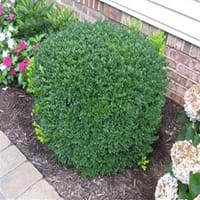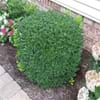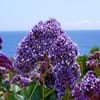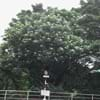Life Span
Perennial
Biennial
Type
Broadleaf Evergreen
Perennial
Origin
Hybrid origin
Texas
Types
Not available
Not available
Habitat
Anthropogenic, meadows, Slopes
Forests, meadows, Pastures, Prairies, savannahs, Woodland edges
USDA Hardiness Zone
6-9
8-10
AHS Heat Zone
Not Available
10-6
Sunset Zone
21,22
H1, 8, 9, 12, 13, 14, 15, 16, 17, 18, 19, 20, 21, 22, 23, 24
Habit
Oval or Rounded
Upright/Erect
Flower Color
Green, Light Yellow
White, Lemon yellow, Light Pink
Flower Color Modifier
Bicolor
Bicolor
Fruit Color
Not Available
Tan
Leaf Color in Spring
Green, Dark Green
Green
Leaf Color in Summer
Dark Green
Green
Leaf Color in Fall
Dark Green
Not Available
Leaf Color in Winter
Dark Green, Bronze
Light Green
Leaf Shape
Oblong elliptic
Alternate
Plant Season
Spring, Summer, Fall, Winter
Spring, Summer
Sunlight
Full Sun, Partial Sun, Partial shade
Full Sun, Partial Sun
Type of Soil
Loam, Sand
Loam, Sand
The pH of Soil
Acidic, Neutral
Neutral, Alkaline
Soil Drainage
Well drained
Well drained
Bloom Time
Spring
Early Spring, Spring, Late Spring, Early Summer, Late Winter
Tolerances
Pollution
Drought
Where to Plant?
Container, Ground, Pot
Container, Ground, Pot
How to Plant?
Seedlings
Seedlings
Plant Maintenance
Medium
Medium
Watering Requirements
Keep ground moist, Keep immersed in water, Medium
Average Water Needs, Do Not over Water, Keep the Soil well drained, Requires regular watering
In Summer
Lots of watering
Lots of watering
In Spring
Moderate
Moderate
In Winter
Average Water
Average Water
Soil pH
Acidic, Neutral
Neutral, Alkaline
Soil Type
Loam, Sand
Loam, Sand
Soil Drainage Capacity
Well drained
Well drained
Sun Exposure
Full Sun, Partial Sun, Partial shade
Full Sun, Partial Sun
Pruning
Remove damaged leaves, Remove dead branches, Remove dead leaves
Remove damaged leaves, Remove dead branches, Remove dead leaves
Fertilizers
10-10-10
All-Purpose Liquid Fertilizer
Pests and Diseases
Blight, Leaf spot, Leafminer, Mites, Psyllids
Pests and diseases free, Red blotch
Plant Tolerance
Pollution
Drought
Flowers
Insignificant
Yes
Flower Petal Number
Not Available
Single
Foliage Texture
Fine
Medium
Foliage Sheen
Glossy
Matte
Attracts
Flying insects, Insects
Bugs, Butterflies, Insects
Allergy
Itchiness, Skin irritation
Abdominal pain, Anxiety, Inflammation, Low blood pressure
Aesthetic Uses
Bonsai, Decorating walls, Landscape Designing, Mass in beds, Mixed Border, Showy Purposes, Used for decorating walls, fences, gates, hedges, etc., Used for making hedges
Beautification, Decorating walls, Hanging Basket, Showy Purposes, Used as an interior landscaping species, Used for decorating walls, fences, gates, hedges, etc.
Beauty Benefits
Not Available
Skin irritation, Skin Problems
Environmental Uses
Air purification, Food for animals, Food for birds
Air purification
Medicinal Uses
Not Available
Eczema, Menstrual Cramps, Menstrual Disorders
Part of Plant Used
Not Available
Flowers, Root, Seeds, Stem
Other Uses
Used as Ornamental plant, Used for Landscaping
Beneficial species for attracting pollinators, deer resistant, Edible seed
Used As Indoor Plant
No
Yes
Used As Outdoor Plant
Yes
Yes
Garden Design
Container, Edging, Foundation, Hedges, Rock Garden, Wall
Mixed Border, Rock Garden, Wall, Wildflower
Botanical Name
BUXUS 'Green Velvet' COPF
OENOTHERA mexicana
Common Name
Green velvet boxwood
pinkladies, pink evening primrose, showy evening primrose, Mexican primrose, and amapola.
In Hindi
Green velvet boxwood
Mexican primrose
In German
Grüner Samt boxwood
Rosa Nachtkerze
In French
Vert velours buis
Mexican primrose
In Spanish
boj terciopelo verde
Primrose mexicana
In Greek
Πράσινο πυξάρι βελούδο
Μεξικού Primrose
In Portuguese
buxo veludo verde
Mexican Primrose
In Polish
Green Velvet bukszpan
Mexican Primrose
In Latin
Carl viridis praetoriola
Mexicanus Primrose
Phylum
Tracheophyta
Tracheophyta
Class
Magnoliopsida
Magnoliopsida
Family
Buxaceae
Onagraceae
Clade
Angiosperms, Eudicots
Angiosperms, Eudicots, Rosids
Tribe
Not Available
Onagreae
Subfamily
Not Available
Onagroideae
Importance of Green Velvet Boxwood and Mexican primrose
Want to have the most appropriate plant for your garden? You might want to know the importance of Green Velvet Boxwood and Mexican primrose. Basically, these two plants vary in many aspects. Compare Green Velvet Boxwood and Mexican primrose as they differ in many characteristics such as their life, care, benefits, facts, etc. Every gardener must at least have the slightest clue about the plants he wants to plant in his garden. Compare their benefits, which differ in many ways like facts and uses. The medicinal use of Green Velvet Boxwood is Not Available whereas of Mexican primrose is Eczema, Menstrual Cramps and Menstrual Disorders. Green Velvet Boxwood has beauty benefits as follows: Not Available while Mexican primrose has beauty benefits as follows: Not Available.
Compare Facts of Green Velvet Boxwood vs Mexican primrose
How to choose the best garden plant for your garden depending upon its facts? Here garden plant comparison will help you to solve this query. Compare the facts of Green Velvet Boxwood vs Mexican primrose and know which one to choose. As garden plants have benefits and other uses, allergy is also a major drawback of plants for some people. Allergic reactions of Green Velvet Boxwood are Itchiness and Skin irritation whereas of Mexican primrose have Abdominal pain, Anxiety, Inflammation and Low blood pressure respectively. Having a fruit bearing plant in your garden can be a plus point of your garden. Green Velvet Boxwood has no showy fruits and Mexican primrose has no showy fruits. Also Green Velvet Boxwood is not flowering and Mexican primrose is flowering. You can compare Green Velvet Boxwood and Mexican primrose facts and facts of other plants too.





